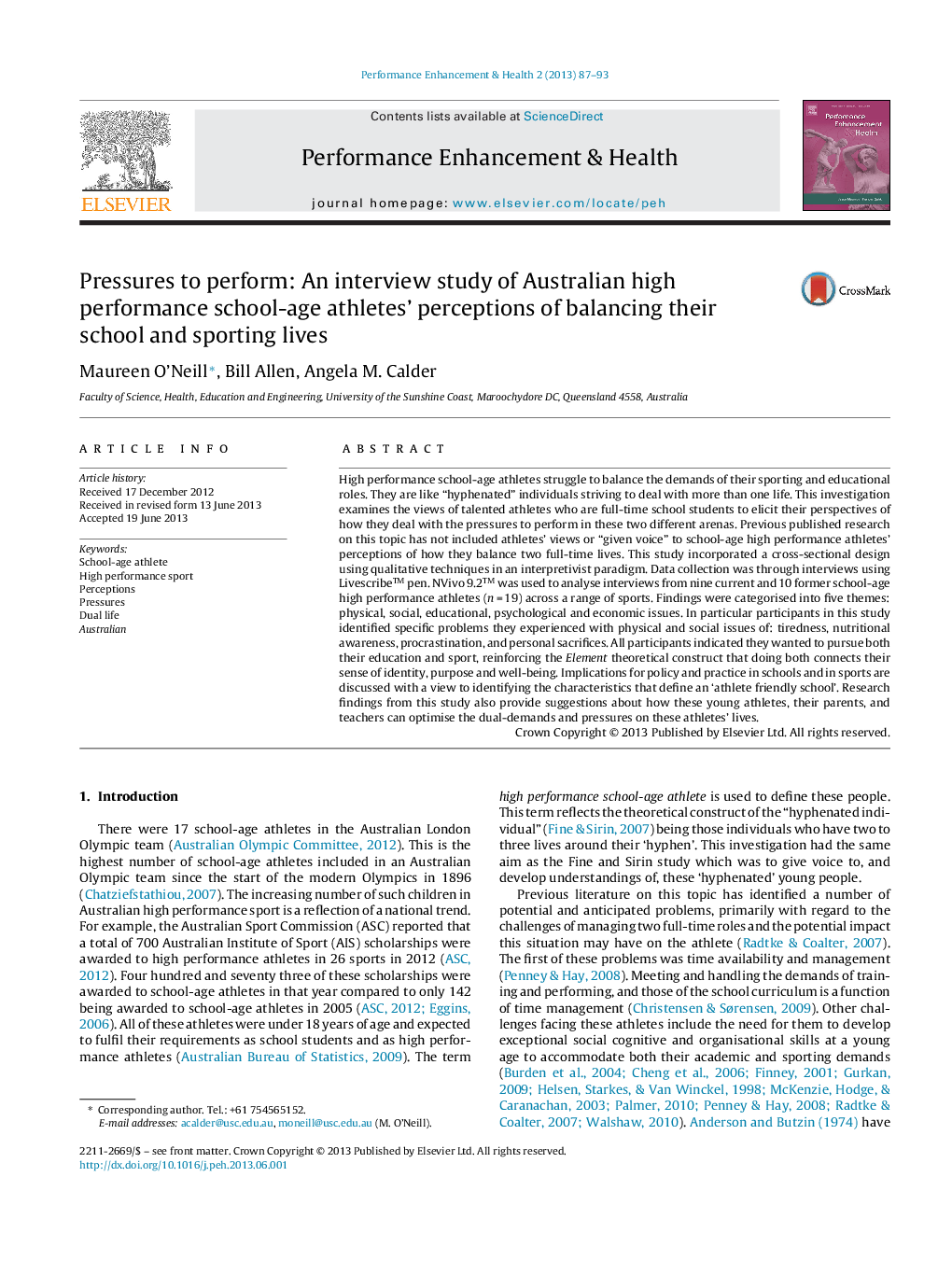| Article ID | Journal | Published Year | Pages | File Type |
|---|---|---|---|---|
| 889583 | Performance Enhancement & Health | 2013 | 7 Pages |
•Talented school-age athletes struggle to balance their lives in sport and school.•Athletes face specific social, psychological, physical, and educational issues.•Ironically both lives strengthen their sense of identity, purpose and well-being.•Schools should adopt ‘athlete-friendly’ guidelines to help students cope with both.
High performance school-age athletes struggle to balance the demands of their sporting and educational roles. They are like “hyphenated” individuals striving to deal with more than one life. This investigation examines the views of talented athletes who are full-time school students to elicit their perspectives of how they deal with the pressures to perform in these two different arenas. Previous published research on this topic has not included athletes’ views or “given voice” to school-age high performance athletes’ perceptions of how they balance two full-time lives. This study incorporated a cross-sectional design using qualitative techniques in an interpretivist paradigm. Data collection was through interviews using Livescribe™ pen. NVivo 9.2™ was used to analyse interviews from nine current and 10 former school-age high performance athletes (n = 19) across a range of sports. Findings were categorised into five themes: physical, social, educational, psychological and economic issues. In particular participants in this study identified specific problems they experienced with physical and social issues of: tiredness, nutritional awareness, procrastination, and personal sacrifices. All participants indicated they wanted to pursue both their education and sport, reinforcing the Element theoretical construct that doing both connects their sense of identity, purpose and well-being. Implications for policy and practice in schools and in sports are discussed with a view to identifying the characteristics that define an ‘athlete friendly school’. Research findings from this study also provide suggestions about how these young athletes, their parents, and teachers can optimise the dual-demands and pressures on these athletes’ lives.
